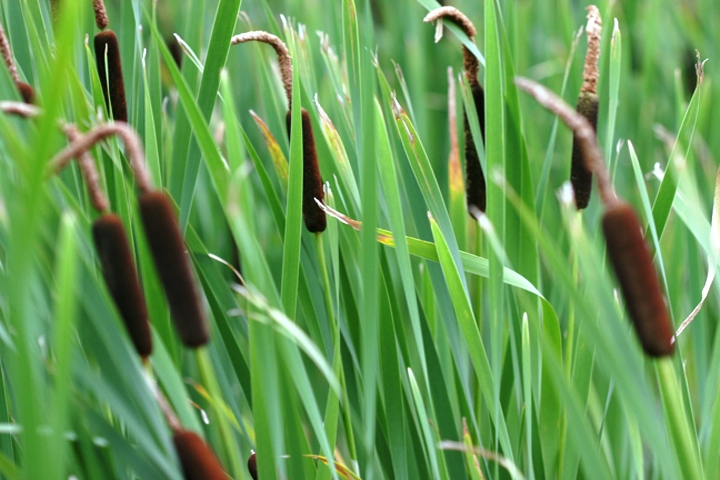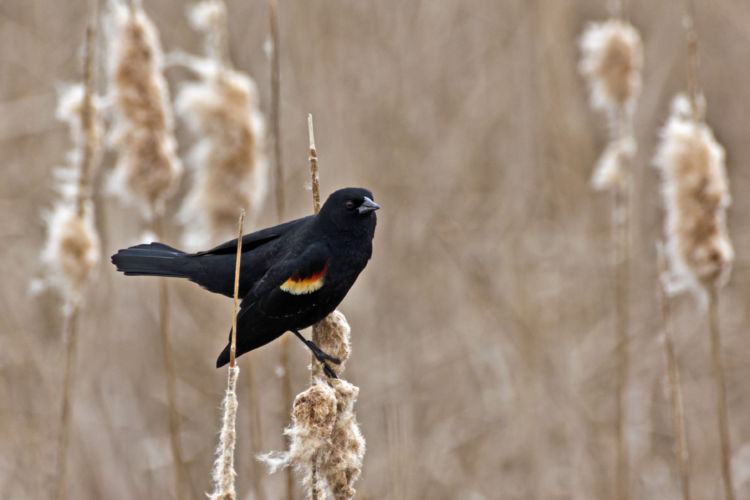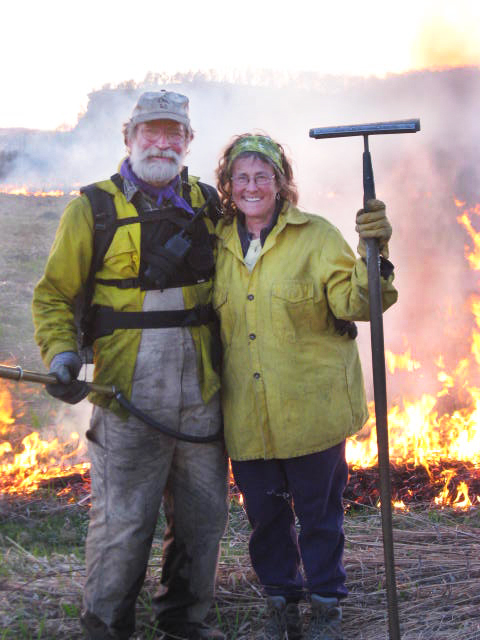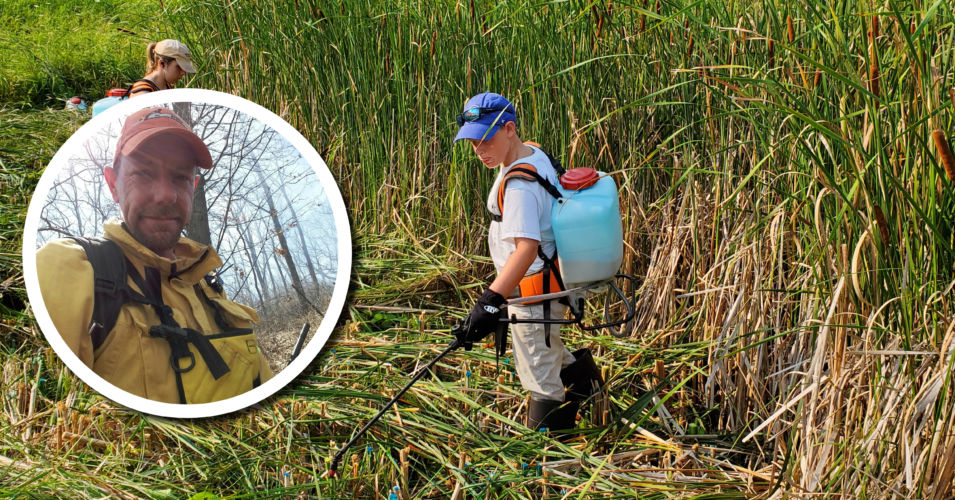Three types of cattail are found in Wisconsin–one native and desirable, and two aggressive and invasive. Broad-leaved cattail (Typha latifolia) is the “good guy.” Narrow-leaved cattail (Typha angustifolia) is one of the “bad guys.” The other bad guy is created when the two other types cross-breed, creating the hybrid cattail (Typha x glauca). Hybrid cattail is aggressive and needs control. Both narrow-leaved and hybrid cattail take over wetlands, and unfortunately, they are becoming more pervasive in Wisconsin and the Midwest. So much so that it is very difficult to find a true stand of native cattail.
If you have large stands of cattail taking over your wetland, you likely have one of the invasive cattails, and you should consider actions to control the cattail in order to make room for native plants in your wetland. The winter is a good time to use the “cut and flood” technique for cattail.
This technique works best if you can control water levels in your wetland: Late summer/early fall is the time to lower water levels in your wetland via your water control structure. (You don’t want to alter water levels after about mid-October, because frogs and salamanders may be living in the mud and lowering the water levels may expose them to freezing temperatures.) Once your wetland is dry (or frozen, if it doesn’t dry out), mow or cut the cattail plants low to the ground (or right to the ice surface). In the spring, set your water levels high to flood your wetland, covering the cut cattail stems.
Use this technique if you cannot control water levels in your wetland: Once your wetland has frozen for the winter, mow or cut the cattail plants as close to the ice as you can. In the spring, melting snow and spring rains should flood the wetland, covering the cut cattail stems.
With either technique, the water that over-tops the cut stems in spring will seep into the roots through the cut stems, ironically drowning this water-loving plant.
Read more about invasive cattail and techniques for its control on the Southeastern Wisconsin Invasive Species Consortium’s website.
Related Content
Invasive plant profile: Cattails
Can I use prescribed fire as a management tool in my wetland?
Wetland Coffee Break: Chemical control of cattail in species-rich wetlands




